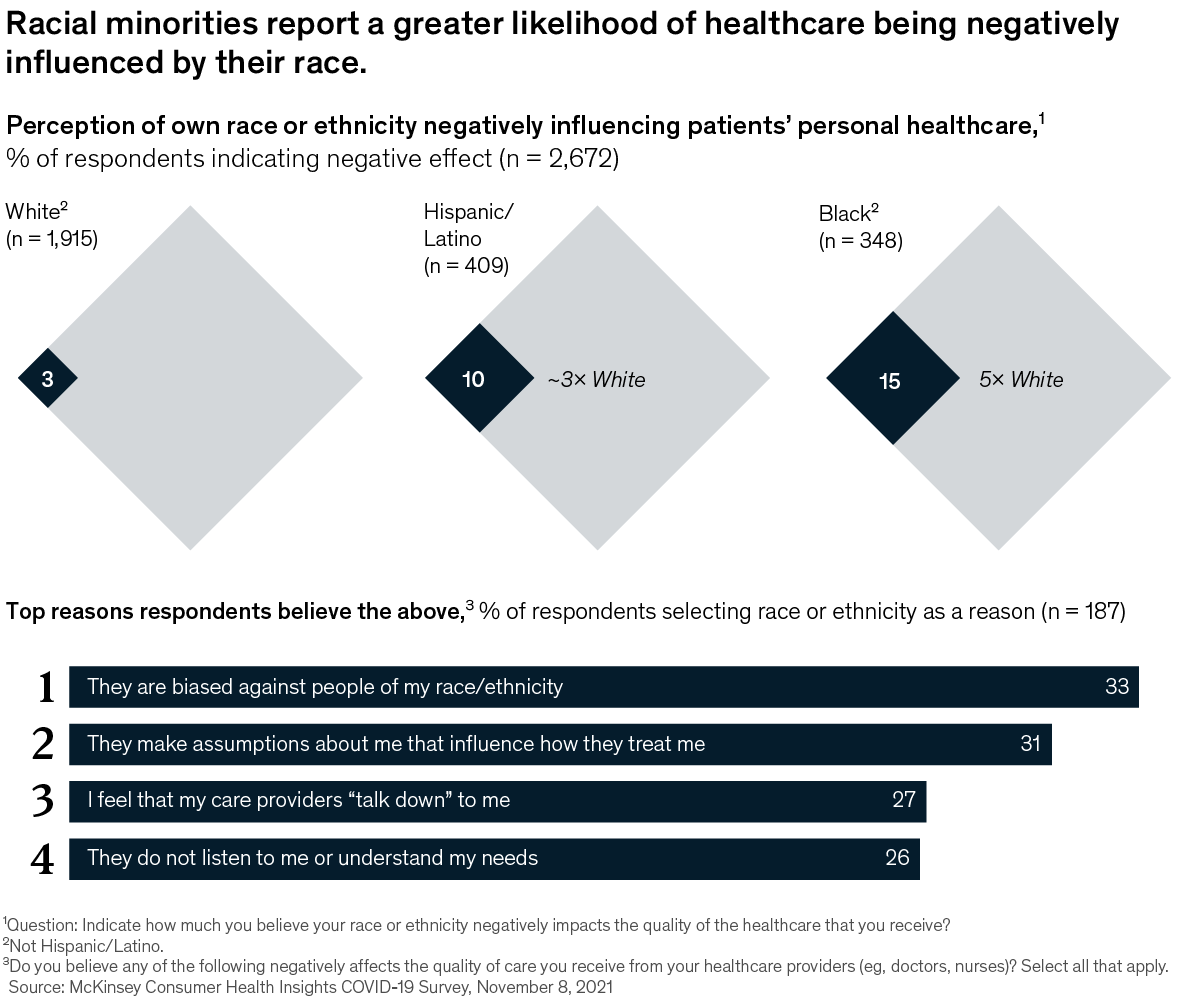Archives
- By thread 3699
-
By date
- June 2021 10
- July 2021 6
- August 2021 20
- September 2021 21
- October 2021 48
- November 2021 40
- December 2021 23
- January 2022 46
- February 2022 80
- March 2022 109
- April 2022 100
- May 2022 97
- June 2022 105
- July 2022 82
- August 2022 95
- September 2022 103
- October 2022 117
- November 2022 115
- December 2022 102
- January 2023 88
- February 2023 90
- March 2023 116
- April 2023 97
- May 2023 159
- June 2023 145
- July 2023 120
- August 2023 90
- September 2023 102
- October 2023 106
- November 2023 100
- December 2023 74
- January 2024 75
- February 2024 75
- March 2024 78
- April 2024 74
- May 2024 108
- June 2024 98
- July 2024 116
- August 2024 134
- September 2024 130
- October 2024 141
- November 2024 122
-
What’s next for the space economy?
McKinsey&Company
The next frontier for business .

Venturing into space In the news • Sizing up cosmic opportunities. Space ventures mean a lot more than stargazing for industries, individuals, and governments. Since satellites play a crucial role in everything from forecasting the weather to monitoring power grids, access to space is likely to become ever-more essential for countries and companies. And geopolitical conflicts on Earth may shift to the skies as countries depend on satellite data for their tactical decisions. [Axios] • A deluge of debris. There’s plenty of junk in space: as much as 9,000 metric tons of it. Approximately 70% of that detritus—from satellite collisions, expended rocket stages, and other defunct endeavors—clutters low-Earth orbit (LEO). While the issue may seem miles away, the risk of celestial satellite crashes hits close to home. According to one space-mapping start-up, the probability that satellites will crash into “mission-terminating debris” has likely doubled. [FT] 
In 2021, private investment in space-related companies topped a record-breaking $10 billion. 
On McKinsey.com • Taking R&D into space. From telecom services to tourism, the space economy is booming. Over the past five years, commercial R&D spending within the space sector increased by 22% annually. In pharmaceuticals, beauty and personal care, food and nutrients, and semiconductors, expanding businesses into space could generate millions—or even billions—of dollars in revenue, McKinsey analysis suggests. R&D in microgravity, for example, could help manufacturers of skin-care products develop active ingredients, since microgravity makes it easier to combine substances. • Investment shifts. Over the past decade, more space investment has flowed to satellite-related and other ventures in LEO, such as space stations and space travel. LEO ventures still lead in funding, but the space industry is on the cusp of another shift, McKinsey research suggests. Investment is accelerating in “lunar and beyond” initiatives, including in mining and robotics. The latest Quarterly Five Fifty shows more ways that myriad industries can boost their businesses into space. — Edited by Sarah Thuerk Explore the space economy 
Was this forwarded to you? Sign up here. Or send us feedback — we’d love to hear from you. 

Follow our thinking 


This email contains information about McKinsey’s research, insights, services, or events. By opening our emails or clicking on links, you agree to our use of cookies and web tracking technology. For more information on how we use and protect your information, please review our privacy policy. You received this email because you subscribed to the On Point newsletter. Manage subscriptions | Unsubscribe Copyright © 2022 | McKinsey & Company, 3 World Trade Center, 175 Greenwich Street, New York, NY 10007
by "McKinsey On Point" <publishing@email.mckinsey.com> - 12:39 - 23 Jun 2022 -
‘Find the smartest technologist in the company and make them CEO’
the Daily read
Join the conversation .
Share this email 



AN ARTICLE A DAY, PICKED BY OUR EDITORS 
Curious about the future of technologies such as AI, crypto, and Web3, plus their implications for business? Get the lowdown from Marc Andreessen, leading Silicon Valley entrepreneur, inventor of the first popular Web browser, co-founder of legendary internet startup Netscape, and all-around tech provocateur. In a new McKinsey Quarterly interview, Andreessen shares his unique perspective on tech trends, the future of the internet, and how digital start-ups and big companies approach business and engineers differently. Check it out to get in the know. — Joyce Yoo, digital editor, New York 
‘Find the smartest technologist in the company and make them CEO’ Silicon Valley’s Marc Andreessen tackles tech trends like artificial intelligence, crypto, and Web3—and why incumbents still have a tough time competing with digital start-ups. Join the conversation 

Quote of the Day —Guy Podjarny, cofounder, president, and chairman of Snyk, on advice he would give to budding entrepreneurs in a recent episode of the McKinsey on Start-ups podcast 
Chart of the Day 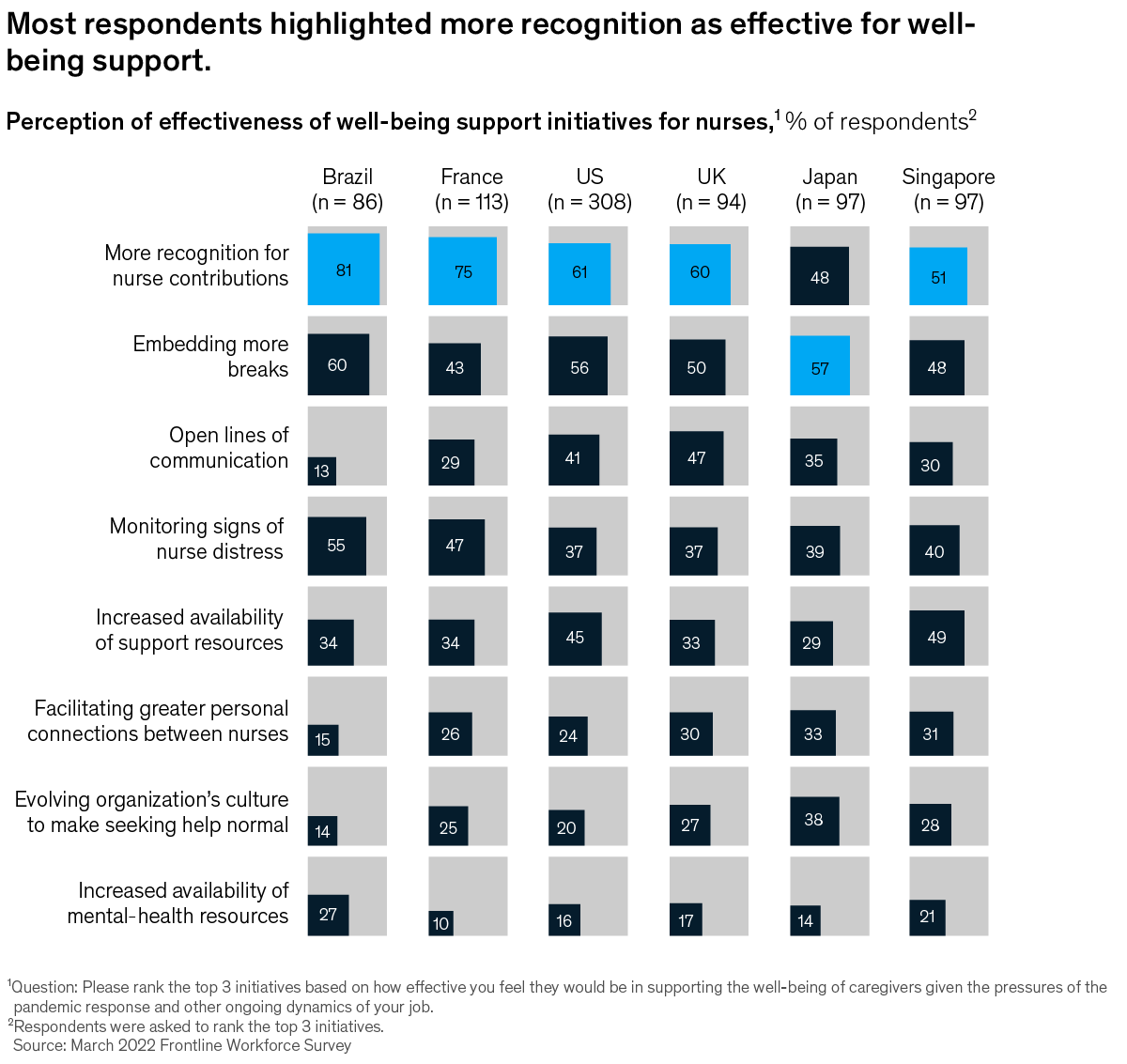
See today’s chart 
Also New 

Advanced tech elevates process modeling in batch-processing industries In high-volume batch-processing industries, reliable models of manufacturing processes can help companies cut production costs while improving quality and performance. Be efficient 


Author Talks: George Floyd’s America revisited Toluse Olorunnipa and Robert Samuels examine the life of the man whose death launched a worldwide movement: “We all have a responsibility to pay attention to people like George Floyd before they die under the knee of a police officer on video.” Don’t forget 


Growth opportunities for digital health in KSA and UAE Digital health can improve patient services and well-being in the Kingdom of Saudi Arabia and the United Arab Emirates. The sector offers growth opportunities for existing players and new market entrants. Seize the opportunity 


Follow our thinking 



Share these insights Did you enjoy this newsletter? Forward it to colleagues and friends so they can subscribe too.
Was this issue forwarded to you? Sign up for it and sample our 40+ other free email subscriptions here.This email contains information about McKinsey’s research, insights, services, or events. By opening our emails or clicking on links, you agree to our use of cookies and web tracking technology. For more information on how we use and protect your information, please review our privacy policy. You received this email because you subscribed to the Daily Read newsletter. Manage subscriptions | Unsubscribe Copyright © 2022 | McKinsey & Company, 3 World Trade Center, 175 Greenwich Street, New York, NY 10007
by "McKinsey Daily Read" <publishing@email.mckinsey.com> - 06:37 - 22 Jun 2022 -
A new view of human capital
Re:think
The key CEO mindsets Human capital is the knowledge, attributes, skills, experience, and health of the workforce, and it accounts for roughly two-thirds of an individual’s total wealth. Right now, people are fundamentally reconsidering what they want to do with their human capital—reassessing how they want to engage with work, who they want to work for, what kind of work they want to do, and on what terms they want to do it. So this is a critical moment for companies to reconsider the way they think about their employees’ human capital.
Typically, companies think about how to deploy human capital to create value for the company. But human capital is really possessed by workers, who are making decisions all the time to augment and enhance their human capital. Being at a company is just part of that journey. So companies that want to retain employees and make the most of their human capital would be wise to focus on human capital from the perspective of the individual. Thinking about how to enrich that individual’s journey can be a more promising frame of reference than thinking about, “How can I profit from these people?”
Our research shows that about half of what people earn during their lifetime is associated with the skills they gain through work. That’s a huge number. A lot of previous research has focused on the value of education, qualifications, and credentials as you enter the workplace. Those are important, but the decisions you make regarding the roles, the jobs, and the skills that you acquire through your work life will drive your earnings. That’s even more true for people who don’t enter the workforce with top credentials. For example, for tile setters or counter workers in the US, the value of the skills they develop at work is more like 65% to 75% of lifetime earnings.
If companies think about themselves as part of that human capital accumulation journey, they’ll change the kind of investments they make in and the opportunities they create for people. There are three key mind shifts to consider.75%
of the lifetime earnings of some workers lacking top entry-level credentials can be attributed to the skills they acquire on the job
The first shift is for companies to start assessing people based on their potential, not just based on success in their current role. We already know that workers are capable of great learning. New roles in the US typically involve 30% new skills, and workers who are upwardly mobile, who improve their compensation and earnings faster, typically take on roles that demand an average of 40% new skills. But companies often don’t act as if this is the case. Too often, they search for the perfect fit. That’s too bad: you’re not looking for a clone, you’re looking for somebody who has what it takes. Smart companies are already making big investments to assess people for their potential. Some tools are structured to evaluate, say, whether employees have a certain set of necessary tech skills. Others might look at patterns of behavior to assess whether the person is entrepreneurial and capable of stretching beyond their current role.
The second shift is for companies to embrace the idea of mobility. Companies should get on the better side of the change dynamic we’re seeing during the Great Resignation.
We see three ways companies can do this. First, embrace internal mobility. Some companies build the equivalent of a digital talent marketplace, a place where you can see how the skills that you have fit into different career pathways. Some even overlay this with career advisory support to help counsel workers wanting to find good paths to follow.
Second, be open to different kinds of mobility paths. Companies often think about mobility as very linear and vertical. But companies that focus on lateral movement create more opportunities for workers trying to build their human capital. Employees want the flexibility to decide, “Here’s an opportunity for me to learn something, even if it’s not a promotion that involves higher pay.”
Third, companies can embrace people who leave their job just as much as they embrace people who join the team. People who leave a company see a future. They’re investing in becoming great professionals. They could be good business partners, or even potentially a source of talent going forward. The more you celebrate such people the more you position yourself as an employer who helps make employees successful. Such companies become talent magnets.
The third mind shift is to double down on smart learning and training for workers. A lot of companies complain that they don’t see productivity gains commensurate with the amount they spend on training. We think companies need to focus more on learning that’s experience-based, anchored in people’s jobs. Structured training is very important when people need to pick up specific technical skills. But so much of what makes an employee successful is more likely to arise out of mentorship and apprenticeship. Apprenticeship is where employees really learn the soft skills that allow them to use their hard skills in work environments that are, let’s face it, fuzzy and unpredictable. And that, after all, is what we all really value in the human worker, as opposed to a machine.ABOUT THE AUTHOR
Anu Madgavkar is a partner in McKinsey’s New Jersey office.
MORE FROM THIS AUTHOR

The rise and rise of the global balance sheet: How productively are we using our wealth?
Net worth has tripled since 2000, but the increase mainly reflects valuation gains in real assets, especially real estate, rather than investment in productive assets that drive our economies.

Financial data unbound: The value of open data for individuals and institutions
Economies that embrace data sharing for finance could see GDP gains of between 1 and 5 percent by 2030, with benefits flowing to consumers and financial institutions.
IN TWO WEEKSSteve Van Kuiken on four tech trends that matter
As innovation moves to the edge of your company, the role of IT shifts dramatically—as does the CEO’s role in managing technology and innovation.
This email contains information about McKinsey’s research, insights, services, or events. By opening our emails or clicking on links, you agree to our use of cookies and web tracking technology. For more information on how we use and protect your information, please review our privacy policy.
You received this email because you subscribed to our McKinsey Quarterly alert list.
Copyright © 2022 | McKinsey & Company, 3 World Trade Center, 175 Greenwich Street, New York, NY 10007
This email contains information about McKinsey’s research, insights, services, or events. By opening our emails or clicking on links, you agree to our use of cookies and web tracking technology. For more information on how we use and protect your information, please review our privacy policy. You received this email because you subscribed to our Sustainability alert list. Manage subscriptions | Unsubscribe Copyright © 2022 | McKinsey & Company, 3 World Trade Center, 175 Greenwich Street, New York, NY 10007
by "McKinsey Quarterly" <publishing@email.mckinsey.com> - 03:37 - 22 Jun 2022 -
Return to the office? Companies need to give workers a real reason why.
McKinsey&Company
Build it right; they will come .

The next-level office In the news • The great divide. After months of start-and-stop mandates to return to the office, some companies are finding that it doesn’t matter what they order their employees to do: many people will keep working from home, regardless of the rules. That’s inspired some organizations to go “remote first,” seeing it as a way to attract the best talent and keep employees happy. Other companies now consider an office buzzing with action to be such a rarity that it sets them apart and attracts gung ho workers. [NYT] • Hating the schlep. The office itself is not the problem: it’s getting to it. Eight of the ten major US cities with the steepest drops in office occupancy had one-way commutes that averaged more than 30 minutes before the COVID-19 pandemic. Economists and psychologists have long known that commuting is a major source of unhappiness; now that people have a way to avoid that misery, they’re holding onto it fiercely. Anticommuting sentiment is global, some observers say, with the emptiest offices being seen in commuter cities that force workers into traffic jams or crowded public transit. [WSJ] 
Strategically located workplaces that are built for purpose and integrated into corporate strategies, cultures, and operating models are more important than ever. 
On McKinsey.com • Raison d’être. Company leaders have traditionally viewed workplaces as cost centers, but this mindset is out of date. The new world of flexible work requires that companies consider workplaces as sources of competitive advantage. The key is to drill down on corporate strategy and determine how real estate can help further corporate goals. Instead of shunting office space decisions off to a siloed real-estate team, CEOs and executive teams should take over and drive the process. • Cutting-edge workplaces. McKinsey highlights three companies that are successfully marrying real estate to strategy. One of them, a biopharma giant, swam against the remote-work tide and doubled down on its headquarters. Top scientists were attracted to the company for the opportunity to work in cutting-edge labs, all wired with the latest collaboration technology. Read the full article for guidance on creating a workplace that provides a competitive edge, illustrated with photographs of state-of-the-art offices. — Edited by Katy McLaughlin Rethink real estate 
Was this forwarded to you? Sign up here. Or send us feedback — we’d love to hear from you. 

Follow our thinking 


This email contains information about McKinsey’s research, insights, services, or events. By opening our emails or clicking on links, you agree to our use of cookies and web tracking technology. For more information on how we use and protect your information, please review our privacy policy. You received this email because you subscribed to the On Point newsletter. Manage subscriptions | Unsubscribe Copyright © 2022 | McKinsey & Company, 3 World Trade Center, 175 Greenwich Street, New York, NY 10007
by "McKinsey On Point" <publishing@email.mckinsey.com> - 12:17 - 22 Jun 2022 -
The metaverse could generate up to $5 trillion in value by 2030
the Daily read
Enter the metaverse .
Share this email 



AN ARTICLE A DAY, PICKED BY OUR EDITORS 
While the world is still figuring out the metaverse and its role in our daily lives, one thing is certain: its potential is too big to ignore. Indeed, a new report on value creation in the metaverse finds it could generate up to $5 trillion in impact by 2030. But how do you navigate a space that’s still taking shape? Explore the research and download the full report, which draws on a survey of more than 3,400 consumers and executives, plus expert interviews and analysis. Prepare for what’s next with insight on the metaverse’s history and characteristics, investment flows, evolving consumer and business behavior—and what leaders should do to realize its value. Don’t miss this vital look at the real business of the virtual world. — Joyce Yoo, digital editor, New York 
Value creation in the metaverse With its potential to generate up to $5 trillion in value by 2030, the metaverse is too big for companies to ignore. Enter the metaverse 

Quote of the Day “I hope that by outlining the people who were impacted by George Floyd’s death, we can also learn more about his life and learn more about how he struggled under the knee of the societal systems that we’ve created.” —Toluse Olorunnipa, a political enterprise and investigations reporter on systemic racial inequality in America, in a recent Author Talks interview 
Chart of the Day 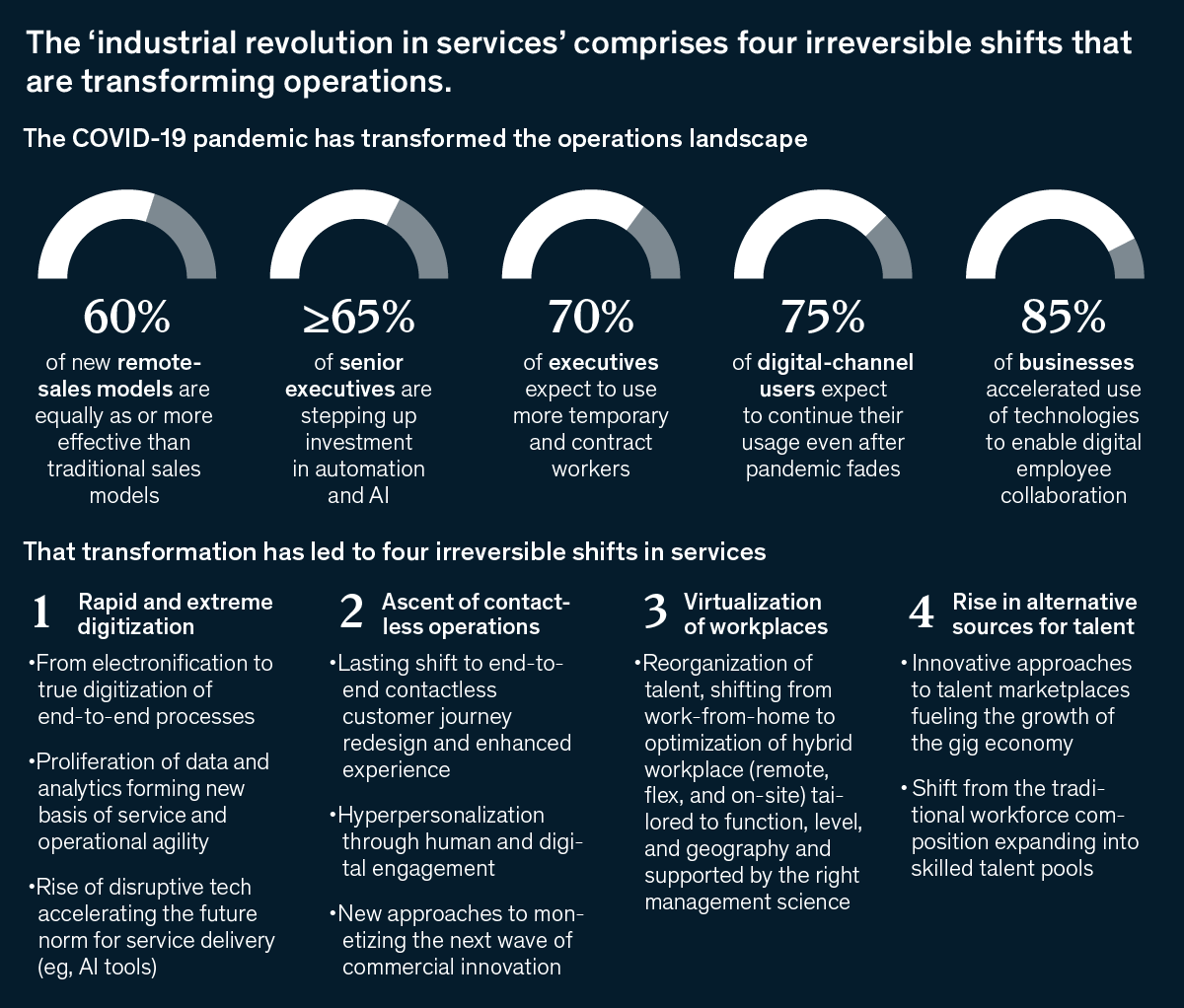
See today’s chart 
Also New 

As more Americans ask for public aid, could integrated benefits help? Public-health and human-services programs help more than 100 million Americans. States that better integrate these programs could increase access, improve outcomes, and reduce costs. Combine and condense 


Three new mandates for capturing a digital transformation’s full value Most organizations achieve less than one-third of the impact they expected from recent digital investments. What can companies learn from the best performers about how to beat the odds today? Think differently 


Accelerating toward net zero: The green business building opportunity Surging demand for zero-carbon technologies, materials, and services gives companies opportunities to build new green businesses. Leaders that move quickly could see exponential growth. Forge ahead 


Follow our thinking 



Share these insights Did you enjoy this newsletter? Forward it to colleagues and friends so they can subscribe too.
Was this issue forwarded to you? Sign up for it and sample our 40+ other free email subscriptions here.This email contains information about McKinsey’s research, insights, services, or events. By opening our emails or clicking on links, you agree to our use of cookies and web tracking technology. For more information on how we use and protect your information, please review our privacy policy. You received this email because you subscribed to the Daily Read newsletter. Manage subscriptions | Unsubscribe Copyright © 2022 | McKinsey & Company, 3 World Trade Center, 175 Greenwich Street, New York, NY 10007
by "McKinsey Daily Read" <publishing@email.mckinsey.com> - 06:41 - 21 Jun 2022 -
[TOMORROW] Unblock integration challenges
Tray Email
5 lucky attendees will receive $50 Amazon gift cards*!Hi Md,
Are integration challenges blocking your business goals? How do you plan to address them? Join Tray.io and Nucleus Research Analyst, Alexander Wurm as we discuss how to build an integration strategy that really works. You'll:
- Learn the integration usability and functionality factors that drive success
- Get five practical strategies to speed integration development by 30-50%
- See a live demonstration of integration in action
Plus, 5 lucky attendees will receive a $50 Amazon gift card* on Tray.
* Only applicable to the US and Canada
 Kayla Gibbons
Kayla Gibbons
MARKETING
© Tray.io Inc. 25 Stillman Street, San Francisco, CA 94107, United States
by "Kayla Gibbons, Tray.io" <kayla@tray.io> - 03:45 - 21 Jun 2022 -
The beauty industry could be more inclusive. How much might that be worth?
McKinsey&Company
Making over the beauty industry .

The business of Black beauty In the news • Natural beauty. In film and television, Black characters are letting down their hair in curls, cornrows, puffs, and twists, flaunting the natural texture that was once frowned upon in Hollywood. Afro-textured hair has long played a central role in Black American identity, but it hasn’t always been celebrated by mainstream America. To combat negative stereotypes, Black people have often had to make others “more comfortable with their very presence” by emulating Eurocentric beauty ideals, as two university professors put it. [NYT] • Caring for textured hair. A big opportunity exists for hair care brands that can meet Black customers’ needs: Black consumers spent roughly $910 billion in 2019. But too often, they have to cope with inadequate beauty products or discrimination in stores. In skin care and makeup, innovative companies have found success by making inclusive products. But there’s a lack of hair care offerings that serve people with textured hair, says one well-known stylist who debuted her own hair care line in May 2022. [Vogue Business] 
Research suggests that 75% of Black beauty consumers can be persuaded to buy beauty products by ads that feature various skin tones across all races. 
On McKinsey.com • Out of stock. Black Americans spent $6.6 billion on beauty products in 2021. Yet Black consumers often have trying experiences within the beauty industry, despite being highly discerning. Nearly three-quarters of Black consumers said that Black beauty products were frequently out of stock where they shopped, a McKinsey survey revealed. At the same time, Black consumers were 44% more likely than their White peers to believe that quality trumped cost and 38% more likely to prefer brands that reflected their personal style. • Building Black brands. A majority of Black consumers said that they prefer to buy brands owned or founded by Black people, according to McKinsey research. But such businesses often face substantial barriers, including a lack of funding and representation, on their way to developing products and winning over consumers. By addressing racial inequity, the US beauty industry could add an additional $2.6 billion in revenue by 2025, the analysis finds. Explore how the beauty industry can better support Black brands and consumers. — Edited by Belinda Yu Serve Black consumers 
Was this forwarded to you? Sign up here. Or send us feedback — we’d love to hear from you. 

Follow our thinking 


This email contains information about McKinsey’s research, insights, services, or events. By opening our emails or clicking on links, you agree to our use of cookies and web tracking technology. For more information on how we use and protect your information, please review our privacy policy. You received this email because you subscribed to the On Point newsletter. Manage subscriptions | Unsubscribe Copyright © 2022 | McKinsey & Company, 3 World Trade Center, 175 Greenwich Street, New York, NY 10007
by "McKinsey On Point" <publishing@email.mckinsey.com> - 10:15 - 20 Jun 2022 -
Sumo Logic DevSecOps live demo series
Sumo Logic
Cloud Monitoring, Log Management, SIEM, and Software Optimisation for Enterprise
 You need a single-source, cloud-native solution for all your DevSecOps needs. Well, we’ve got good news: Sumo Logic can do that. We cordially invite you to our Live Demo Series where you can see how Sumo Logic optimises all your cloud environments for security, monitoring, analytics, software development and more.
You need a single-source, cloud-native solution for all your DevSecOps needs. Well, we’ve got good news: Sumo Logic can do that. We cordially invite you to our Live Demo Series where you can see how Sumo Logic optimises all your cloud environments for security, monitoring, analytics, software development and more.Cloud Security Monitoring and Analytics, June 21st at 12pm AEDT Learn how to: - Analyse risk through through context awareness of firewall, CDN, and database data
- Enforce security configurations and monitor for any drifts across your cloud environments
- Detect anomalies with machine learning on the cloud
- Identify threats in real time
- Respond to security incidents quickly
Register Cloud SIEM, June 22nd at 12pm AEDT Learn how to: - Automate alert triage and turn security alerts into actionable insights
- Use correlation-based threat detection
- Enable network, user, and entity context for threat investigations
- Navigate a highly-tuned security interface built by analysts FOR analysts
Register Application Observability, June 28th at 12pm AEDT Learn how to: - Leverage out of the box tools to manage your microservices stack
- Use transaction tracing to diagnose issues in distributed microservices code
- Surface insights to determining proper provisioning levels
- Unlock advanced analytics to troubleshoot modern applications quickly
Register Software Development Optimization, June 29th at 12pm AEDT Learn how to: - Automate setup via Terraform for out of the box integrations across multiple software development tools (like Jira, GitHub, Jenkins, Bitbucket, PagerDuty, and OpsGenie)
- Benchmark performance against industry-leading DevOps and Research Assessment (DORA) metrics
- Use real-time insights to drive continuous optimisation of software development and delivery across the entire CI/CD pipeline
Register We look forward to you joining us for live demos with product experts. Feel free to let us know if you have any questions ahead of time.
Sumo Logic
I'm not interested in this series.
Sumo Logic, Level 9, 64 York Street, Sydney, NSW 2000
© 2022 Sumo Logic, All rights reserved.Unsubscribe 


by "Sumo Logic" <marketing-info@sumologic.com> - 05:33 - 20 Jun 2022 -
MD, today's 🎙 webinar starts in less than 1 hour.
MD, today's 🎙 webinar starts in less than 1 hour.
There is still time to join us for Webinar: Remote for refugeesHi MD,
🎙 WEBINAR: Remote for refugees
Starts in less than 1 hour.
What will you learn?
- Practical insights to help employers and hiring managers find forcibly displaced talent
- Benefits of hiring forcibly displaced talent for the employee and the employer
- Practical guidance on how to overcome challenges when hiring refugee talent
- The state of refugee work rights around the world and the advocacy movement for right-to-remote-work
- Announcement about a new platform to help employers find vetted refugee talent
Speakers:
-
Peter Maher: Senior Special Operations Manager at Remote
-
Filipa Matos: VP of Special Operations at Remote
-
Lorraine Charles: Co-founder & Executive Director at Na'amal
Hire, onboard, and pay your international team in minutes and stay compliant.
You received this email because you are subscribed to News & Offers from Remote Technology, Inc.
Update your email preferences to choose the types of emails you receive.
Unsubscribe from all future emailsRemote Technology, Inc.
Copyright © 2022 Remote Technology, Inc. All rights reserved.
18 Bartol St. #1163 San Francisco California
by "Remote" <hello@remote-comms.com> - 03:02 - 20 Jun 2022 -
Harnessing anxiety and fear: A leader’s guide
Leading Off
From anxiety to advantage .
Share this email 



ESSENTIALS FOR LEADERS AND THOSE THEY LEAD 
Anxiety and fear are universal experiences, and there’s plenty to be fearful and anxious about these days. The pandemic. The swings of the stock market. Changes in how—and where—we work. For leaders, it’s important to be able to parse what are real fears and what are anxieties to get a better handle on mental health and burnout. This week, let’s explore some productive ways to calmly help yourself and those you lead through these trying times. AN IDEA 
Harness your anxiety for good At face value, anxiety can seem like an inherently negative—and sometimes debilitating—emotion that we should avoid, but that doesn’t have to be the case. In this Author Talks interview, psychology and neuroscience professor Dr. Tracy Dennis-Tiwary explains how, with some mindset shifts, anxiety can go from feeling like a malfunction to serving as a useful tool. “When we listen to anxiety as information that’s energizing us, instead of frightening and depleting us, it helps us be more innovative and creative,” she says. In her book, Future Tense: Why Anxiety Is Good For You (Even Though It Feels Bad), she explores how we can work toward embracing anxiety as a human experience instead of pushing it away—which is more likely to cause it to spiral out of control. When we think of anxiety as an adaptive quality of resilience, we are better equipped to navigate it and to let go of anxieties that are not useful, including those that are unreasonable in proportion to the current situation or threat. 
A BIG NUMBER 37% That’s the percentage of workplace respondents who reported experiencing anxiety in the past year, according to a 2020 study. Recent numbers from the World Health Organization show that anxiety and depression levels have increased by 25 percent globally since the start of the COVID-19 pandemic. As a leader, you can influence your team’s anxiety levels for better or worse. This Harvard Business Review series on managing in an anxious world explores how leaders can effectively face their anxiety and that of their teams in four stages: identifying how your anxiety manifests, taking steps to actively manage it, leading others in times of high anxiety, and building a support system of processes and people to manage it over the long term. As the authors say, “Anxiety is a powerful enemy, so we must make it our partner.” 

A QUOTE “Dampening the anxiety that fuels distracting rumors requires explaining decisions in enough detail to convey that you, as a leader, are treating the people affected with nuance and care.” That’s Hayagreeva “Huggy” Rao and Robert Sutton, management experts and professors at the Graduate School of Business at Stanford University. In times of extreme uncertainty, they say, leaders can help their teams move “from a room called fear to a room called hope” by focusing not only on making the right decisions but also on doing the “emotion work” to frame and implement them in the right way. By exhibiting understanding and extending a feeling of control, leaders can anticipate and manage the psychological responses of others, including anxiety and despair, in difficult times. 
A SPOTLIGHT INTERVIEW 
What lessons can an NFL trainer, gym founder, and creator of the Afghan Women’s Boxing Federation impart about fear? In this Author Talks interview, Tareq Azim describes fear not as something to “get out of our systems” but rather as an empowering tool that we can use to set intention and responsibility in our lives, whether it’s on the field or in the workplace. “Fear is what makes us conscious,” Azim says. “Fear brings nerves. Nerves happen to lead us to being extremely mindful of our capabilities.” Nerves can paralyze people into inaction, but Azim teaches those he coaches to use their nerves—and the heightened level of consciousness they fuel—to thoughtfully prepare and act because “fear is actually designed for us to achieve things.” 
FEAR FACTOR 
According to a recent McKinsey survey, 85 percent of executives believe fear holds back innovation efforts at their organizations. Furthermore, 90 percent of companies aren’t doing anything about it. McKinsey research unveils that corporate innovation is stifled primarily by three types of fear: fear of criticism, fear of uncertainty, and fear of negative career impact. Just as leaders focus on systems and initiatives that stimulate idea generation and risk taking, they must also develop a culture that both considers individuals’ emotional experiences at work and allays the fears that will hold their teams back. Lead by managing anxiety and fear. — Edited by Dana Sand, an editorial production manager in McKinsey’s Cleveland office 

Follow our thinking 



Share these insights Did you enjoy this newsletter? Forward it to colleagues and friends so they can subscribe too.
Was this issue forwarded to you? Sign up for it and sample our 40+ other free email subscriptions here.This email contains information about McKinsey’s research, insights, services, or events. By opening our emails or clicking on links, you agree to our use of cookies and web tracking technology. For more information on how we use and protect your information, please review our privacy policy. You received this email because you subscribed to the Leading Off newsletter. Manage subscriptions | Unsubscribe Copyright © 2022 | McKinsey & Company, 3 World Trade Center, 175 Greenwich Street, New York, NY 10007
by "McKinsey Leading Off" <publishing@email.mckinsey.com> - 02:08 - 20 Jun 2022 -
Empower your team with immersive creative tools
Watch our three-part webinar series to supercharge your creative collaborationRead online 

Create anytime, anywhere. Are you ready to level-up your creativity with powerful collaboration?
We’re bringing you an on-demand three-part webinar series, giving you insight into how Adobe Creative Cloud is enabling connected creativity, unlocking your team’s potential and empowering creative careers.
Session one puts the spotlight on collaboration:■ AI, Cloud Services and mobile. ■ Transformational employee work experiences. ■ Adobe solutions for all device types. 
Uncover the creative trends shaping tomorrow In the 2022 Creative Trends forecast from Adobe Stock, explore the trends driving the next era of creativity. 

Speak with one of our experts today to understand how Adobe Creative Cloud can help you grow your business with the world’s best creative apps and services. 

Adobe and the Adobe logo are either registered trademarks or trademarks of Adobe in the United States and/or other countries. All other trademarks are the property of their respective owners.
Spread the word 


© 2022 Adobe Inc. All rights reserved.
This is a marketing email from Adobe, 345 Park Avenue, San Jose, CA 95110 USA.
Click here to unsubscribe.
Your privacy is important to us. Please review Adobe’s Privacy Policy.
by "Adobe" <demand@info.adobe.com> - 01:13 - 20 Jun 2022 -
Top 5 podcast episodes
McKinsey&Company
At #1: How to master the seven-step problem-solving process .
Share this email 



New from McKinsey & Company Top 5 podcast episodes Need something to listen to on your next road trip or commute? Check out our top 5 podcast episodes of all time, featuring epsiodes from The McKinsey Podcast and Inside the Strategy Room. Subscribe for the latest episodes on your favorite podcast platforms, and keep your ear to the ground for more on the business and management issues that matter. 

How to master the seven-step problem-solving process Structured problem solving can be used to address almost any complex challenge in business or public policy. Adapt your approach 


Blockchain explained: What it is and isn’t, and why it matters Understanding how blockchain creates business value is essential for companies to identify the right use cases and move beyond small pilots to widespread adoption. Tune in 


What is the future of work? A new podcast series from the McKinsey Global Institute explores how technologies like automation, robotics, and artificial intelligence are shaping how we work, where we work, and the skills we need to work. What's next 


Meet Generation Z: Shaping the future of shopping The newest consumer generations—Gen Z and millennials—are upturning retailers’ expectations. Here’s how—and what to do about it Prepare for shifts 


Microsoft’s next act CEO Satya Nadella talks about innovation, disruption, and organizational change. Confront digital disruption 
— Curated by Eleni Kostopoulos, a digital publishing manager in New York 

Follow our thinking 


McKinsey Insights - Get our latest
thinking on your iPhone, iPad, or Android


Share these insights Did you enjoy this newsletter? Forward it to colleagues and friends so they can subscribe too.
Was this issue forwarded to you? Sign up for it and sample our 40+ other free email subscriptions here.This email contains information about McKinsey’s research, insights, services, or events. By opening our emails or clicking on links, you agree to our use of cookies and web tracking technology. For more information on how we use and protect your information, please review our privacy policy. You received this email because you subscribed to our McKinsey Global Institute alert list. Manage subscriptions | Unsubscribe Copyright © 2022 | McKinsey & Company, 3 World Trade Center, 175 Greenwich Street, New York, NY 10007
by "McKinsey & Company" <publishing@email.mckinsey.com> - 06:22 - 19 Jun 2022 -
The week in charts
the Daily read
Race and healthcare, working mothers, and more .
Share this email 



ALL THE WEEK’S DATA THAT'S FIT TO VISUALIZE 
Our Charting the path to the next normal series offers a daily chart that helps explain a changing world—as we strive for sustainable, inclusive growth. In case you missed them, this week’s graphics explored racial disparities in perceived quality of healthcare, career advancement for working mothers, the values of dairy-product shoppers, ESG concerns, and advanced recycling. FEATURED CHART Race and quality of care 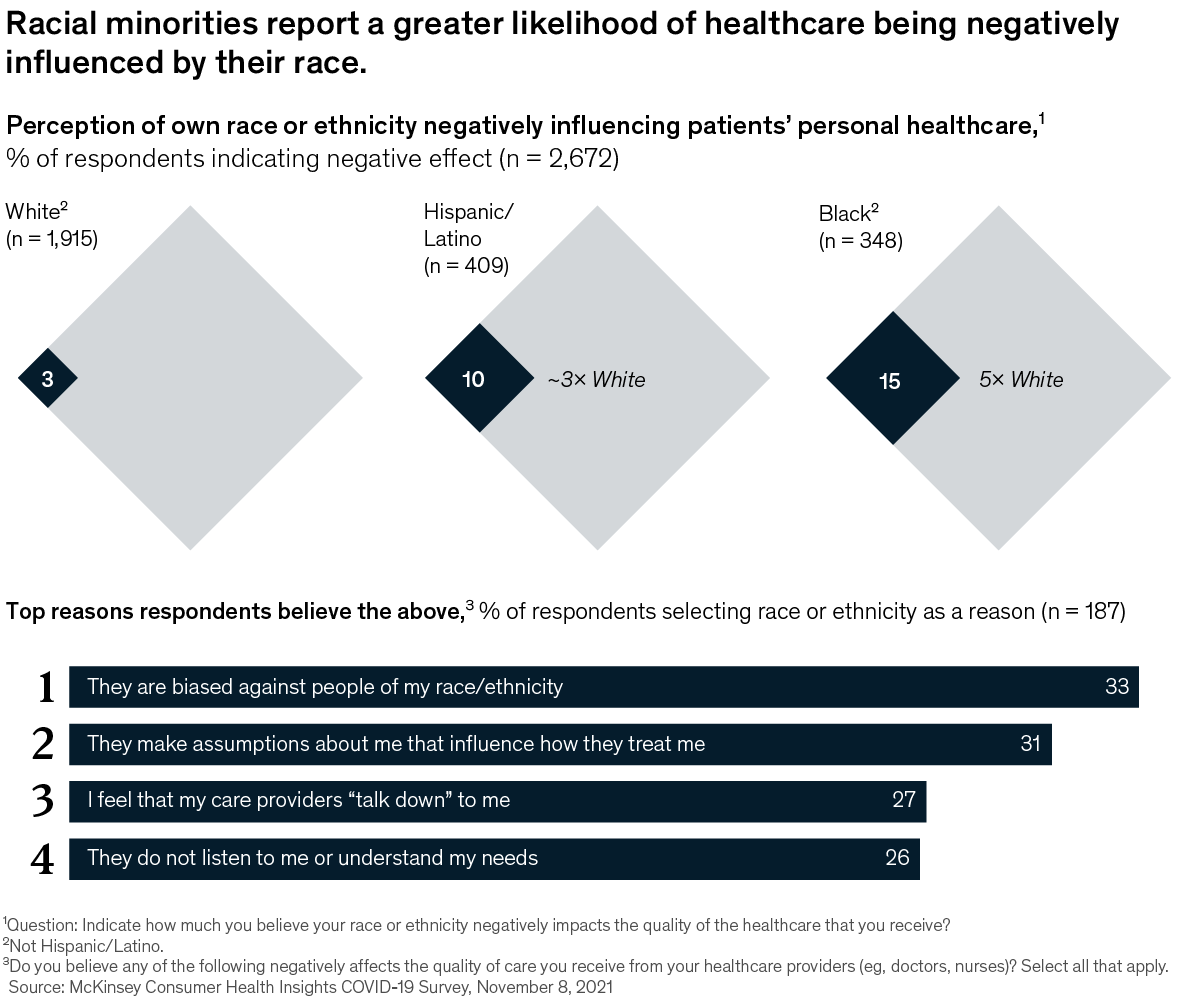
See more 



This week’s other select charts Careers constrained Two scoops of ethical ice cream, please Value and values Ramping up recycling 

Follow our thinking 



Share these insights Did you enjoy this newsletter? Forward it to colleagues and friends so they can subscribe too.
Was this issue forwarded to you? Sign up for it and sample our 40+ other free email subscriptions here.This email contains information about McKinsey’s research, insights, services, or events. By opening our emails or clicking on links, you agree to our use of cookies and web tracking technology. For more information on how we use and protect your information, please review our privacy policy. You received this email because you subscribed to The Week in Charts newsletter. Manage subscriptions | Unsubscribe Copyright © 2022 | McKinsey & Company, 3 World Trade Center, 175 Greenwich Street, New York, NY 10007
by "McKinsey Week in Charts" <publishing@email.mckinsey.com> - 03:46 - 18 Jun 2022 -
The risk function of the future
McKinsey&Company
Banks as harbingers of change .
Share this email 



McKinsey Classics | June 2022 
The risk function of the future Banks exist to lend, and every lending decision is a risk decision. That’s why the basic trends and responses in bank risk can reveal the future of the risk function throughout big business. In 2016, McKinsey published an article explaining these trends and their impact. It’s well worth reading today. The first big trend in risk is that governments, after spending billions of dollars to bail out banks and other big companies, have become much less willing to accept it. In fact, financial institutions not only face stricter regulation at home but must also comply with it wherever they operate. The recent sanctions against Russia, for example, cover banks and the companies that use them. That means all companies. The second trend is the rise and proliferation of risky customer expectations. As new companies (in banking, the fintech companies) challenge incumbents, customers of banks and other businesses have come to expect intuitive, seamless experiences; services at any time on any device; and instant decisions. The risk function will have to manage the dangers. To learn more about these and other trends and how companies can respond to them, read “The future of bank risk management.” — Roger Draper, editor, New York Learn how companies will manage risk 



Related Reading 
From risk management to strategic resilience 

Risk transformations: The heart, the art, and the science 
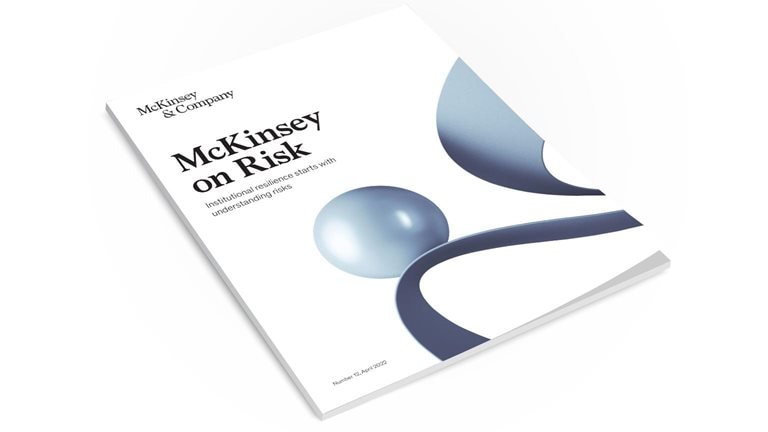
McKinsey on Risk, Number 12, April 2022 

Did You Miss Our Previous McKinsey Classics? 

A more productive environment for everyone Simple communication tweaks based on behavioral research can nudge employees into top form and create a more productive environment for everyone. Read our 2016 classic “How small shifts in leadership can transform your team dynamic.” Learn these simple communication tweaks 





Follow our thinking 


McKinsey Insights - Get our latest
thinking on your iPhone, iPad, or Android

This email contains information about McKinsey’s research, insights, services, or events. By opening our emails or clicking on links, you agree to our use of cookies and web tracking technology. For more information on how we use and protect your information, please review our privacy policy. You received this email because you subscribed to our McKinsey Classics newsletter. Manage subscriptions | Unsubscribe Copyright © 2022 | McKinsey & Company, 3 World Trade Center, 175 Greenwich Street, New York, NY 10007
by "McKinsey Classics" <publishing@email.mckinsey.com> - 11:40 - 18 Jun 2022 -
Juneteenth, metaverse, the space economy: The Daily Read weekender
Harmony Internal - McKinsey
Highlights as you ease into the weekend CURATED PICKS FOR YOUR DOWNTIME, FROM OUR EDITORS

Torea Frey
Managing Editor, SeattleThe weekend ahead marks Juneteenth and Father’s Day in the United States—are you celebrating? From diversity, equity, and inclusion to the space economy, here’s what broke through this week:
Quote of the day
—Jim Kavanaugh, CFO and a senior vice president of IBM, in a recent episode of the Future of America podcast
Chart of the day
ready to unwind?

FIREd up
Julien and Kiersten Saunders climbed the corporate ladder tirelessly until they discovered the Financial Independence, Retire Early (FIRE) movement. Now they’re on track to retire decades early as millionaires.

Explore McKinsey Themes
Essential reading on topics that matter. This weekend’s posts touch on Juneteenth, Father’s Day, the gift of feedback, and more.

54-Down: It has four dimensions
Know the answer? Test yourself with the latest McKinsey Crossword.
Share these insights
Did you enjoy this newsletter? Forward it to colleagues and friends so they can subscribe too. Was this issue forwarded to you? Sign up for it and sample our 40+ other free email subscriptions here.
This email contains information about McKinsey’s research, insights, services, or events. By opening our emails or clicking on links, you agree to our use of cookies and web tracking technology. For more information on how we use and protect your information, please review our privacy policy. You received this email because you subscribed to the Daily Read newsletter. Manage subscriptions | Unsubscribe Copyright © 2022 | McKinsey & Company, 3 World Trade Center, 175 Greenwich Street, New York, NY 10007
by "McKinsey Daily Read" <publishing@email.mckinsey.com> - 06:08 - 17 Jun 2022 -
Datadog’s State of Serverless Livestream Event
The State of ServerlessHello,
Join Datadog for an exclusive presentation of our findings about the current State of Serverless. AWS Lambda has helped catalyze the serverless movement by enabling teams to deploy and run code on a pay-as-you-go model since its launch in 2014. In fact, we found in the State of Serverless report that over half of organizations operating in each major cloud have adopted serverless.
During the livestream on June 28 at 12:00pm ET, you’ll hear how serverless compute has become an essential part of the technology stacks of organizations that operate in each cloud and that there are meaningful differences between the serverless offerings available within AWS, Azure, and Google Cloud, and each gives users distinct options for building serverless applications.
Additionally, there will be a live question and answer component for you to speak to the presenters directly. I hope to see you there!
Best,
Andrew Krug
Security and Compliance Advocacy Lead
Visit our email preference center to unsubscribe or change subscription options
©2022 Datadog Inc, 620 8th Ave, 45th Floor, New York, NY 10018This email was sent to info@learn.odoo.com.
by "Andrew Krug" <content@datadoghq.com> - 10:01 - 17 Jun 2022 -
$1 trillion is at stake: It’s time to reconsider your approach to the cloud
The Shortlist
Plus, the relationship between ice cream and ethics .
Share this email 



Our best ideas, quick and curated | JUNE 17, 2022 View in browser 
This week, we look at all the steps that companies should take to get value from the cloud. Plus, how leaders can buck a herd mentality, and David Gergen, a longtime presidential adviser and political analyst, on how the Baby Boomers have to step back and let younger leaders lead. 
Cloud aspirations versus cloud value. The potential of the cloud is pretty much indisputable today, and the vast majority of companies around the world use cloud technology. But many (even those already on the cloud) may be stuck in legacy thinking about on-site computing models, with calcified strategies based on either owning or consuming IT instead of encompassing various cloud-specific financial approaches and models. Companies are making a number of cloud economics mistakes, and McKinsey has compiled the six most common and detrimental. As cloud consumption becomes more core to business than ever, companies that manage their cloud economics effectively will find true cloud value—rather than simply having cloud aspirations. Technology talent shortage. More than $1 trillion—that’s right, trillion—of new value is at stake in the cloud. But companies aren’t seizing those benefits, because they don’t have the right tech talent in place. Nearly all—95 percent—of respondents to a recent survey told McKinsey that they lack cloud talent and capabilities, and it’s one of their biggest roadblocks in getting value from the cloud. Between 2017 and 2020, investments in cloud transformations tripled, but many companies haven’t matched that pace on the talent front. The companies that have report deep and positive impact. To help more companies build a high-performing cloud talent bench and operating model, McKinsey has identified a list of practical actions to take. Bring in your board. Increased innovation speed? Better IT efficiency? More business value thanks to technology? Look to the cloud, as countless companies have. But many haven’t captured its benefits at scale. It’s time to brief your board on the benefits of cloud tech; a clear view of its impact can help boards effectively support your cloud transformation. McKinsey’s series of charts can help boards shape their organizations’ cloud strategy. Get foundational. Too often, IT departments focus on short-term gains—migrating a set of applications to the cloud as fast as they can—without first building the right cloud foundations. Such migrations can flounder, resulting in significant delays and even financial repercussions. Companies that lay a solid foundation will see notable rewards in speed and value, and McKinsey has outlined the ten most crucial actions for building it. — Justine Jablonska 
OFF THE CHARTS I’ll take two scoops of ethics, please Ice cream and yogurt shopping preferences are constantly swirling. But while flavor is always king, ingredients, packaging, distribution, and ethical promises are increasingly important to consumers. According to McKinsey research, more than seven in ten shoppers are willing to pay more for products from producers that pay workers fairly, operate locally, and emit less carbon. 
Check out our chart of the day here. 

PODCAST Boosting support for Latino entrepreneurs and others What factors can help augment Latino participation in the US economy? In this episode of The McKinsey Podcast, senior partner Lucy Pérez discusses the findings of The economic state of Latinos in America: The American dream deferred—McKinsey’s inaugural report on this subject. She explains how greater support for Latino business owners, workers, consumers, and investors in the US could create economic opportunities for not only Latino individuals and families but also the economy overall. Pérez talks about how this subject is of personal, as well as professional, interest to her: her father owned several restaurants, the fruits of which allowed her to be the first in his family to attend college. “That was possible because of the growth and opportunity my dad created for us through his business,” she says. 
MORE ON MCKINSEY.COM When the crowd isn’t necessarily wise | The latest edition of Bias Busters explores how leaders can recognize herd mentality when it happens—and utilize the contrarian view to help break the spell. The future of African oil and gas | With momentum building for sustainability, Africa’s oil- and gas-producing nations have an opportunity to embark on an inclusive energy transition and chart a course toward a sustainable future. Five myths about retail media | Retail media networks are transforming the advertising landscape and boosting top retailers’ bottom lines. McKinsey’s latest survey helps debunk five mistaken beliefs about them. 
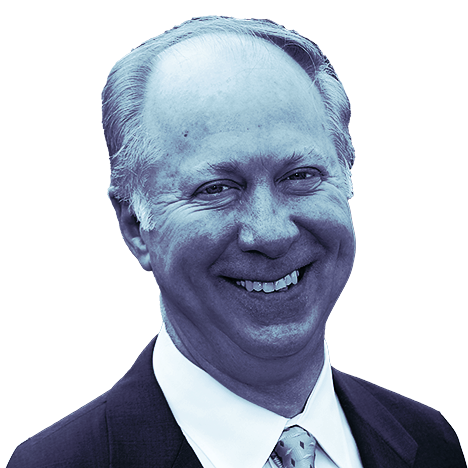
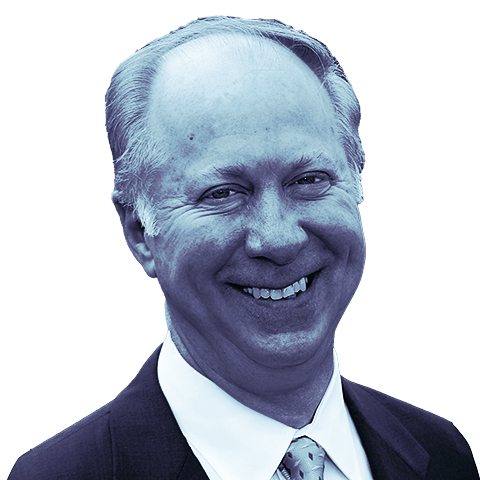
THREE QUESTIONS FOR David Gergen David Gergen, presidential adviser and founding director of the Harvard Kennedy School’s Center for Public Leadership, thinks the US needs fresh thinking to solve intractable problems. In his new book, Hearts Touched with Fire: How Great Leaders Are Made, he urges Baby Boomers to pass the baton to younger leaders. This is an edited excerpt of his Author Talks interview. What did the Baby Boom generation get wrong? As former US senator Daniel Patrick Moynihan used to say, we borrowed a trillion dollars and had a great party. And yet, what have we gotten for all the efforts of the Baby Boom population? We’re in a situation where that cohort is leaving behind a country in real trouble. The World War II generation, by contrast, left behind an America that was the strongest country since the days of Ancient Rome militarily, economically, and culturally. We were in great shape, but we’ve slipped from that, and we ought to recognize it. We ought to call it out for what it is, and we need to prepare the leaders of the future—people who are going to return this country to a better place. You say leadership requires a hard head and a soft heart. Why? Both things are important. You do need someone who is tough. I found with presidents, for example, if you’re in international negotiations with an adversary, you want to be very respectful. You want to make some progress, but you also want that adversary to know that if you don’t make progress, or if they try to screw you over in one way or another, you have a club in the closet. Keep that club in the closet; use it only as a last resort. But you better have a club because people will have a lot more respect for you and will listen to you when you do that. It also increasingly happens that, to be effective, you need a strong sense of empathy toward the people you’re dealing with. You need to see the world as they see it. An important element of leadership today is to understand the little guy, to understand the women who’ve been discriminated against, to understand the people of color who’ve been discriminated against, and to join them in trying to make their lives better. True leaders today have that combination of hardheadedness and a soft heart. What gives you hope about the future of America? What I have found in the younger generations is a grit and an idealism that I think are rare. There are a lot of young people who remind me of World War II veterans, especially those people coming back from Afghanistan and Iraq in the US military. They learned hard discipline. I’ve worked with the veterans coming back, and I’ve spent a lot of time trying to help them get elected on both sides of the aisle. I find they’re very appealing—people who can change the world. One of the big issues is that there are just not enough of them, which is one of the reasons we ought to be looking at the creation of a new national service program. We could encourage every young person between the ages of 18 and 24 to spend at least a year giving back to the community by working in a soup kitchen, working for a hospital, working in a place of worship, or working at any other place where you can give back. This, I think, is one of the great avenues forward. By the way, if you go to college and then do this, the idea behind national service is that for every year you give to your community, you could get one year off on your college debt. These debts weigh people down. If you have a lot of debt, it’s really, really hard to be in service to the country, but if we help to solve that problem, people can do wonders. — Edited by Barbara Tierney Share this Q & A 



BACKTALK Have feedback or other ideas? We’d love to hear from you. 
Tell us what you think 

Follow our thinking 



Share these insights Did you enjoy this newsletter? Forward it to colleagues and friends so they can subscribe too.
Was this issue forwarded to you? Sign up for it and sample our 40+ other free email subscriptions here.This email contains information about McKinsey’s research, insights, services, or events. By opening our emails or clicking on links, you agree to our use of cookies and web tracking technology. For more information on how we use and protect your information, please review our privacy policy. You received this email because you subscribed to The Shortlist newsletter. Manage subscriptions | Unsubscribe Copyright © 2022 | McKinsey & Company, 3 World Trade Center, 175 Greenwich Street, New York, NY 10007
by "McKinsey Shortlist" <publishing@email.mckinsey.com> - 01:23 - 17 Jun 2022 -
Stretched between home and work? So are ambitious dual-career couples.
McKinsey&Company
Why helping power couples helps companies .

Power couples In the news • When mom outearns dad. New moms spend more time on housework than their spouses do, but when a woman is the family’s primary breadwinner, she takes on even more, finds a recent study. As a mom’s salary increases to 50% of the household income, her weekly hours spent on household chores fall from 18 to 14. But after outearning her husband, a woman’s housework increases to about 16 hours weekly. Men who are primary breadwinners spend six to eight hours weekly on domestic labor, and less than that when outearned by their wives. [WaPo] • Possibilities and pitfalls. Dual-career couples (DCCs) have always been torn between the competing demands of work and home. But the COVID-19 pandemic has opened up new opportunities and potential pitfalls for dual-income couples. Working remotely enables both partners to tap into a wider job market. In addition, with many employers struggling to fill roles, workers are better able to push for flexible schedules. However, some employers are sharing concerns that hybrid work could hinder women, since they often perform more domestic work than men. [FT] 
Many workers in dual-career couples believe that top-executive responsibilities might come at a cost too high for their families. 
On McKinsey.com • The struggle is real. According to a McKinsey survey of more than 35,000 workers, 89% of women and 70% of men are part of a couple in which both partners have jobs. Employees in DCCs can often struggle to find career fulfillment because the constant juggling of responsibilities between home and two demanding careers can be overwhelming, especially when children are in the mix. That may be why employees in DCCs are less likely than those in single-career couples (SCCs) to report being happy with their jobs. • Dual ambition. Employees in DCCs generally have more career ambition than those in SCCs, McKinsey research finds. When compared with their SCC peers, more people in DCCs say they are eager to be promoted and aspire to become a top executive. When companies have policies that support employees in DCCs, workers and their employers benefit. Employees tend to be more loyal when they have flexible schedules, which may reduce turnover and hiring costs. Learn what actions companies can take to help DCCs thrive. — Edited by Belinda Yu Support dual-career couples 
Was this forwarded to you? Sign up here. Or send us feedback — we’d love to hear from you. 

Follow our thinking 


This email contains information about McKinsey’s research, insights, services, or events. By opening our emails or clicking on links, you agree to our use of cookies and web tracking technology. For more information on how we use and protect your information, please review our privacy policy. You received this email because you subscribed to the On Point newsletter. Manage subscriptions | Unsubscribe Copyright © 2022 | McKinsey & Company, 3 World Trade Center, 175 Greenwich Street, New York, NY 10007
by "McKinsey On Point" <publishing@email.mckinsey.com> - 12:12 - 17 Jun 2022 -
How to be successful at a digital transformation
the Daily read
Think differently .
Share this email 



AN ARTICLE A DAY, PICKED BY OUR EDITORS 
What’s critical to today’s successful digital transformations? Creating impact from digital investments is a major (and essential) undertaking for most organizations, as digital technologies are an increasingly important differentiator of strategy and performance. So what are the secrets to successful, sustained digital transformations? A new McKinsey survey delves into what top-performing companies do differently to set themselves apart now. As your organization navigates this era of uncertainty, check out the three lessons to beat the odds and make an impact. — Joyce Yoo, digital editor, New York 
Three new mandates for capturing a digital transformation’s full value Most organizations achieve less than one-third of the impact they expected from recent digital investments. What can companies learn from the best performers about how to beat the odds today? Think differently 

Quote of the Day “By wrestling with exacting expectations from their core Black customers, while at the same time contending with misperceptions by the broader market, Black brands are squeezed in a way that non-Black brands aren’t and forced to walk a unique tightrope in moving their businesses forward.” —Get updated on the challenges of building a Black beauty brand and the path to more equity in “Black representation in the beauty industry” 
Chart of the Day 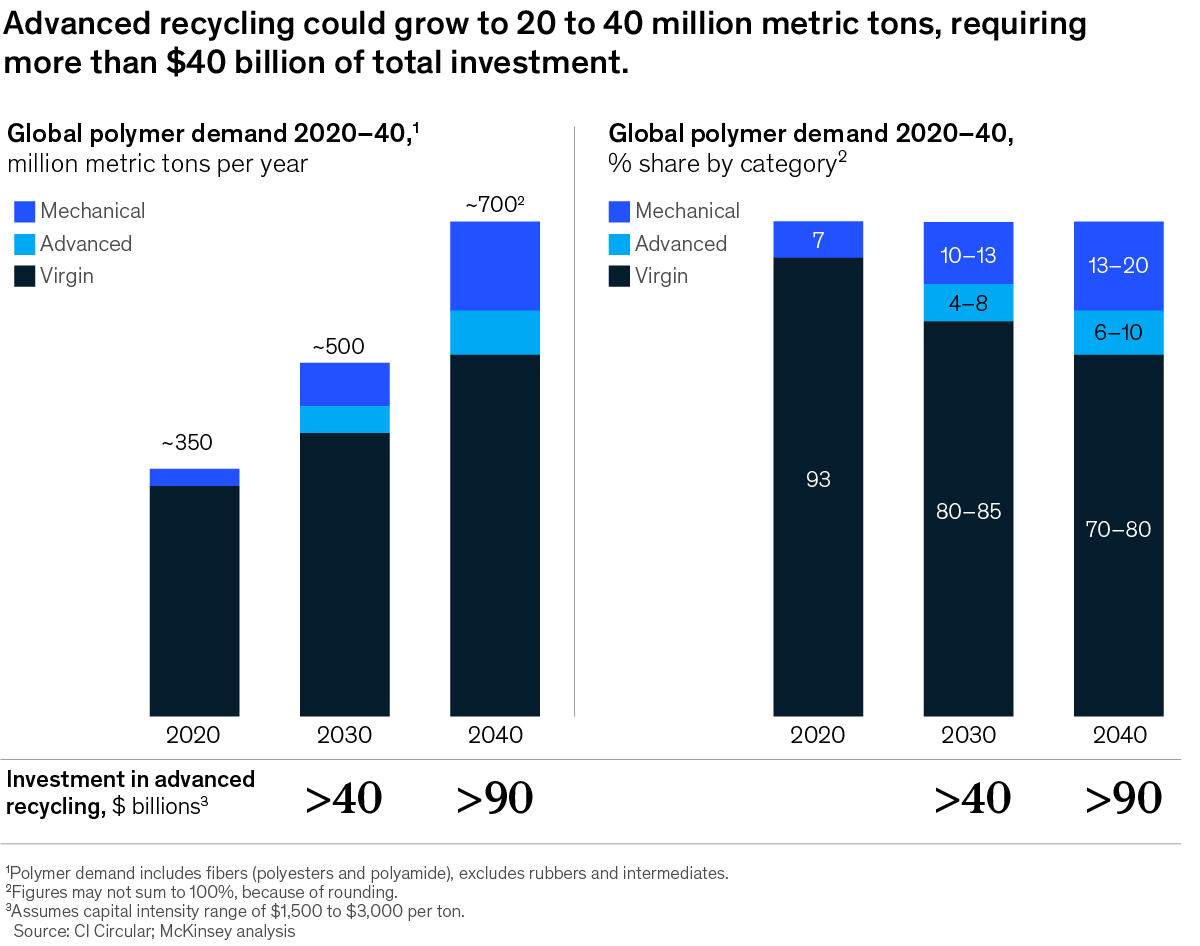
See today’s chart 
Also New 

Unbundling value: How leading insurers identify competitive advantage For US life insurers to address new and old challenges, they need a fresh approach to their business model and how they create value. Understand the implications 


Ten ways to accelerate the benefits of digital health in Saudi Arabia Saudi Arabia has already taken steps to digitize its healthcare system and fast-track improvements in patient experience, quality of care, and efficiency. Improve patient experience 


What Germany can teach the world about shared micromobility As the largest and most advanced market for shared e-kickscooters in Europe, Germany is serving as a test lab for competitive dynamics among providers. Engage the competition 


Follow our thinking 



Share these insights Did you enjoy this newsletter? Forward it to colleagues and friends so they can subscribe too.
Was this issue forwarded to you? Sign up for it and sample our 40+ other free email subscriptions here.This email contains information about McKinsey’s research, insights, services, or events. By opening our emails or clicking on links, you agree to our use of cookies and web tracking technology. For more information on how we use and protect your information, please review our privacy policy. You received this email because you subscribed to the Daily Read newsletter. Manage subscriptions | Unsubscribe Copyright © 2022 | McKinsey & Company, 3 World Trade Center, 175 Greenwich Street, New York, NY 10007
by "McKinsey Daily Read" <publishing@email.mckinsey.com> - 07:11 - 16 Jun 2022 -
Meet the Black beauty execs
McKinsey&Company
Take a new direction .
Share this email 



New from McKinsey Quarterly 
Meet the Black beauty execs Creating a path to a more equitable beauty market for Black brands represents a $2.6 billion opportunity. McKinsey talked to four founders and entrepreneurs who are leading the way. Take a new direction 



Related Reading 
Black representation in the beauty industry Black beauty consumers and brands face deep challenges when it comes to equity. Removing those barriers can lead to greater opportunity for everyone in the industry. Flip the script 


Follow our thinking 


McKinsey Insights - Get our latest
thinking on your iPhone, iPad, or Android


Share these insights Did you enjoy this newsletter? Forward it to colleagues and friends so they can subscribe too.
Was this issue forwarded to you? Sign up for it and sample our 40+ other free email subscriptions here.This email contains information about McKinsey’s research, insights, services, or events. By opening our emails or clicking on links, you agree to our use of cookies and web tracking technology. For more information on how we use and protect your information, please review our privacy policy. You received this email because you subscribed to our McKinsey Quarterly alert list. Manage subscriptions | Unsubscribe Copyright © 2022 | McKinsey & Company, 3 World Trade Center, 175 Greenwich Street, New York, NY 10007
by "McKinsey & Company" <publishing@email.mckinsey.com> - 02:41 - 16 Jun 2022

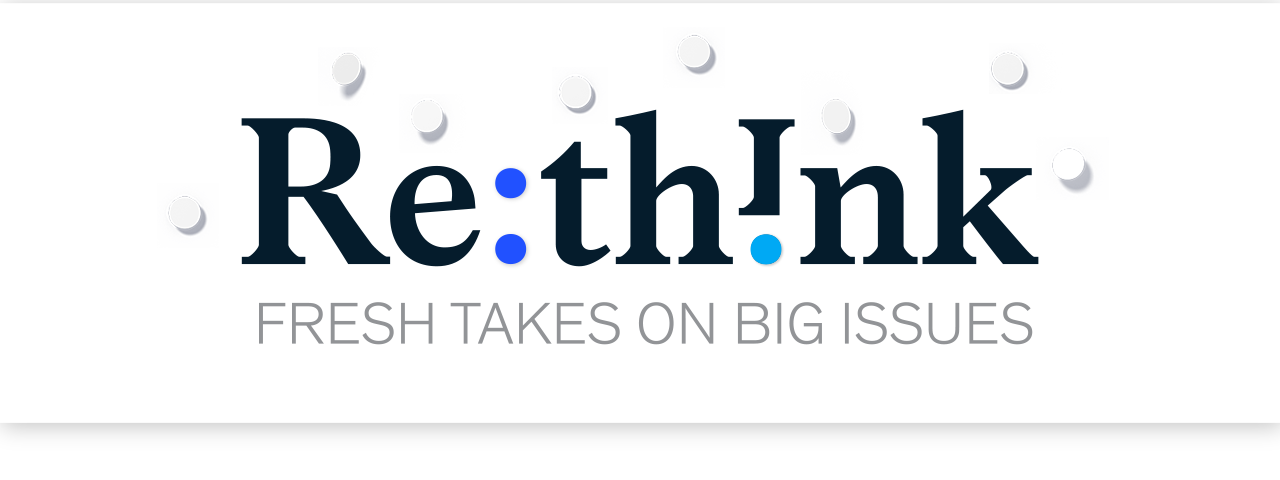

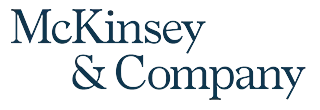



.png?width=1200&upscale=true&name=Group%201%20(6).png)













